Ballparks, they are a-shrinking.
For the fourth time in the past five seasons, at least one ballpark has moved in its fences. Following Citi Field in 2012, Petco Park and Safeco Field in 2014, then Citi Field again in 2015, Marlins Park will feature a smaller playing field when it reopens its doors in 2016. The Miami Marlins' stadium endured a significant renovation to its outfield fences during the winter, the details of which had not been fully confirmed as of our publishing date of Feb. 8. All information that had been shared by the team is detailed in the write-ups below.
When evaluating players for fantasy baseball, their home ballparks often have a noticeable influence on their statistics. Ascertaining these advantages can often prove complicated: Certain ballparks favor hitters, others pitchers; some favor right-handed hitters, some left-handed and some favor both equally; and others still favor contact ability, power, speed or gap hitting.
The aforementioned changes, too, affect the statistics. In the case of Citi Field, the smaller dimensions resulted in a boost for left-handed power. In the case of Marlins Park, smaller fences throughout the ballpark should take it from one of the worst venues in baseball for home runs to merely a below-average one, while diminishing its advantage for extra-base hits. The specifics of these ballparks' changed dimensions, and the result -- or projected impact -- upon them are detailed in the rankings below.
One could simply head to our Park Factor page for a basic read on park factors. But be aware of their limitation: They're one-year samples and are therefore more likely influenced by personnel who called them "home" in that given season. I prefer to take a longer-range approach -- in this column's case, a five-year sample from 2011-15 -- to help neutralize the annual fluctuations in statistics at each venue.
Ranked below are all 30 Major League Baseball stadiums, from the most to least hitter-friendly, including any specific player advantages gained. Those seeking the most pitching-friendly venues should read the list beginning at No. 30. Park factors for runs and home runs (overall, for right- and left-handed batters) include the most recent five seasons' worth of data unless otherwise noted, and are on the first line under the ballpark's name; each ballpark's reported dimensions moving from left to right field, with fence heights listed in parentheses, follow on the second line; and the ballpark's altitude, roof type and playing field are on the third line.
For a handy reference, here are quick links to each of the 30 ballparks:

1. Coors Field, home to Colorado Rockies
Runs: 1.427, HR: 1.323, HR (RHB): 1.310, HR (LHB): 1.342
Dimensions: 347' (8')-390' (8')-415' (8')-375' (8')-350' (14')
Altitude: 5,186 feet; Open-air stadium; Grass field
It's the No. 1 run-scoring environment in baseball, but not merely due to the distance a baseball travels at the mile-high altitude (a common misconception). Coors' expansive outfield, creating the largest amount of fair territory in baseball, results in the game's best venue for hits of all kinds (1.247 factor) and second-best for extra-base hits (1.298), and the offensive benefits are mostly balanced for rightes and lefties. In addition, the effects of the altitude upon a pitched baseball -- breaking pitches won't break quite so sharply and it's more difficult to keep pitches down -- force an adjustment for the Rockies when traveling and their opponents when visiting, with the more frequent trips for Rockies players a logical explanation for their extreme home/road splits. Breaking down Coors' park factors into the Rockies' and their opponents' stats, from 2011-15, opponents had a 1.199 run and 1.244 home-run factor; the Rockies had 1.669 and 1.409. This is why it's a dangerous thing to extrapolate a departing Rockies hitter's road stats, like Corey Dickerson's career .249/.286/.410 triple-slash rates, to a full season elsewhere. Take those Coors visitors' park factors to heart, too, as fantasy owners are often quick to exaggerate its impact upon a visiting player.

2. Chase Field, home to Arizona Diamondbacks
Runs: 1.100, HR: 1.047, HR (RHB): 1.020, HR (LHB): 1.095
Dimensions: 330' (7.5')-376' (7.5')-407' (25')-376' (7.5')-335' (7.5')
Altitude: 1,061 feet; Retractable-roof stadium; Grass field
The high altitude -- it's no Coors, but it is more than 100 feet higher in elevation than the third-highest venue -- short fences in left and field and roughly league average in distance power alleys make Chase a hitting-rich environment, but it's actually most advantageous for extra-base hits (1.179 factor). That's partially due to the massive, 25-foot wall in center field, which afforded roughly 11 homers all of last year.

3. Miller Park, home to Milwaukee Brewers
Runs: 1.085, HR: 1.297, HR (RHB): 1.263, HR (LHB): 1.366
Dimensions: 344' (8')-370' (8')-400' (8')-374' (8')-345' (6')
Altitude: 618 feet; Retractable-roof stadium; Grass field
Would you have guessed that Miller had the best home run factor for left-handed batters from 2011-15 (1.366)? The six-foot-high fence down the right-field line, as well as the relatively short distance from there ranging just shy of right-center field, surely contributed. Miller is also one of the best parks for walks (1.057 factor).

4. Rogers Centre, home to Toronto Blue Jays
Runs: 1.040, HR: 1.149, HR (RHB): 1.183, HR (LHB): 1.091
Dimensions: 328' (10')-375' (10')-400' (10')-375' (10')-328' (10')
Altitude: 268 feet; Retractable-roof stadium; Artificial field
The Blue Jays' right-handed lumber might've influenced Rogers' righty-power factors, but that 328-feet distance down the left-field line makes this a good power park for them nevertheless, and all around the outfield, Rogers' measurements are almost entirely shorter than the major league averages. Rogers is especially good for extra-base hits (1.188 factor), which is probably a result of the artificial turf.
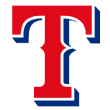
5. Globe Life Park, home to Texas Rangers
Runs: 1.150, HR: 1.117, HR (RHB): 1.092, HR (LHB): 1.151
Dimensions: 332' (14')-380' (8')-400' (8')-377' (8')-325' (8')
Altitude: 543 feet; Open-air stadium; Grass field
Though not quite the homer haven it once was -- one theory behind this being the reduction of the "jetstream effect" due to the team's decision following the 2012 season to remove the glass windows of the luxury club behind home plate -- Globe Life remains one of the more hitting-friendly environments in the game, due to its hottest-in-baseball temperatures and relatively small foul territory. It is especially advantageous for hits (1.064 factor), walks (1.047) and contact (0.955 strikeout factor).
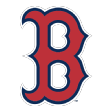
6. Fenway Park, home to Boston Red Sox
Runs: 1.118, HR: 0.901, HR (RHB): 1.075, HR (LHB): 0.735
Dimensions: 310' (37')-335' (37')-420' (17')-380' (5')-302' (3')
Altitude: 16 feet; Open-air stadium; Grass field
No venue is as diverse in playing-field design and the result upon its park factors is stark. Besides the "Green Monster," which gobbles up home runs but helps inflate the venue's best-in-baseball extra-base hits factor (1.310), Fenway has an extremely small amount of foul territory (some sources measure it the smallest, by square feet). Fenway is the second-best ballpark for all kinds of hits (1.099), but it is the third-worst park for home runs for left-handed hitters, behind only AT&T Park and Marlins Park, and that's before adjusting for the Marlins' 2016 park changes.
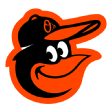
7. Oriole Park at Camden Yards, home to Baltimore Orioles
Runs: 1.072, HR: 1.208, HR (RHB): 1.125, HR (LHB): 1.339
Dimensions: 333' (7')-364' (7')-410' (7')-373' (7')-318' (25')
Altitude: 36 feet; Open-air stadium; Grass field
Camden Yards' power alleys are among the most advantageous in baseball, but it's best for left-handed power, despite the 25-feet fence in right field. The short outfield fences elsewhere -- seven feet everywhere else -- have much to do with it.
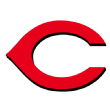
8. Great American Ball Park, home to Cincinnati Reds
Runs: 1.053, HR: 1.321, HR (RHB): 1.337, HR (LHB): 1.299
Dimensions: 328' (12')-379' (12')-404' (8')-370' (8')-325' (8')
Altitude: 490 feet; Open-air stadium; Grass field
Let's clear up another misconception: Great American is not just a lefty-power haven. Oh, it's favorable for lefty power, but it actually sports the best right-handed home run factor in baseball (it's fifth-best for lefties). Great American is also average for hits (1.007 factor) and below-average for extra-base hits (0.916), but it's the second-best venue in the game for strikeouts (1.080).

9. Target Field, home to Minnesota Twins
Runs: 1.023, HR: 0.961, HR (RHB): 1.043, HR (LHB): 0.850
Dimensions: 339' (8')-377' (8')-404' (8')-367' (23')-328' (23')
Altitude: 827 feet; Open-air stadium; Grass field
We're all about dispelling misconceptions here, and the next is that Target Field is a pitchers' park. It's not. It's only poor for left-handed power, and that's due to the 23-feet fence from the right-field line all the way into right-center field, though even then, Target's fence distances are actually shorter in both places than the league's average. Target is actually one of the best venues for right-handed hitters all around: Hits (1.072), extra-base hits (1.092) and home runs. This was one of the better places for Byung Ho Park's skill set in the U.S.

10. Yankee Stadium, home to New York Yankees
Runs: 1.035, HR: 1.239, HR (RHB): 1.119, HR (LHB): 1.354
Dimensions: 318' (8')-399' (8')-408' (8')-385' (8')-314' (8')
Altitude: 23 feet; Open-air stadium; Grass field
Short porch, right field. You know all about it, and its resulting home-run advantage, especially for left-handed hitters, who have the second-best factor in the game. But the truth is that Yankee Stadium is generous for power all-around ... and it's positively awful for extra-base hits (0.869 factor).

11. Comerica Park, home to Detroit Tigers
Runs: 1.030, HR: 0.957, HR (RHB): 0.963, HR (LHB): 0.949
Dimensions: 345' (7')-370' (9')-420' (8')-388' (12')-330' (8')
Altitude: 578 feet; Open-air stadium; Grass field
Strangely enough, Comerica is baseball's second-worst venue for strikeouts (0.886), only barely trailing Coors Field (0.879). Otherwise, it's fairly close to league average in all other regards, except for right-handed extra-base hits (1.149 factor), perhaps a result of a somewhat more spacious left-center field, which contributes to ranking Comerica's fair territory among the five largest by square feet in baseball.

12. U.S. Cellular Field, home to Chicago White Sox
Runs: 1.039, HR: 1.191, HR (RHB): 1.209, HR (LHB): 1.161
Dimensions: 330' (8')-377' (8')-400' (8')-372' (8')-335' (8')
Altitude: 595 feet; Open-air stadium; Grass field
The ultimate "three true outcomes" park, U.S. Cellular has the sixth-best home run factor, the highest walk factor (1.173) and the fifth-highest strikeout factor (1.064). Like Yankee Stadium, it's most advantageous for power, from a hitting perspective, and one of the worst for extra-base hits (0.896 factor). An extreme fly-ball hitter like Todd Frazier should find life at U.S. Cellular most enjoyable.

13. Nationals Park, home to Washington Nationals
Runs: 1.011, HR: 0.932, HR (RHB): 0.969, HR (LHB): 0.881
Dimensions: 336' (8')-377' (8')-402' (8')-370' (12')-335' (8')
Altitude: 6 feet; Open-air stadium; Grass field
We're into the neutral ballparks section, and Nationals Park has been remarkably consistent in its neutrality from a run-scoring perspective -- from 2011-15 it wasn't more than seven percentage points off the league's average in any one year. But it's an oddly contact-oriented venue, with a high-ranking 1.049 hits factor and low-ranking 0.940 strikeouts factor, and isn't extreme in any other regard. Daniel Murphy, whose 92.4 percent contact rate last year led the league, should fit in nicely.

14. Minute Maid Park, home to Houston Astros
Runs: 1.009, HR: 1.123, HR (RHB): 1.119, HR (LHB): 1.130
Dimensions: 315' (19')-362' (25')-435' (10')-373' (10')-326' (7')
Altitude: 21 feet; Retractable-roof stadium; Grass field
It's another one of those venues that is most favorable for "three true outcomes" players, with top-10 factors in terms of home runs, walks (1.026) and strikeouts (1.066). Minute Maid provides a boost to righties with pull power -- think Evan Gattis -- thanks to its Crawford Boxes in left field, but is otherwise neutral.

15. Kauffman Stadium, home to Kansas City Royals
Runs: 1.027, HR: 0.845, HR (RHB): 0.850, HR (LHB): 0.839
Dimensions: 330' (8')-387' (8')-410' (8')-387' (8')-330' (8')
Altitude: 857 feet; Open-air stadium; Grass field
It's a larger ballpark than you might think, ranking top-three in terms of fair territory measured by square feet, making Kauffman slightly better than league average in hits (1.016) and extra-base hits (1.116) but one of the worst for power. Neither righties nor lefties garner a noticeable advantage.

16. Progressive Field, home to Cleveland Indians
Runs: 0.988, HR: 1.027, HR (RHB): 0.882, HR (LHB): 1.148
Dimensions: 325' (19')-370' (19')-405' (9')-375' (9')-325' (9')
Altitude: 653 feet; Open-air stadium; Grass field
Progressive is one of the more underrated power parks for left-handed hitters, ranking ninth in home run factor from that side, but only 22nd for right-handed hitters. That's largely due to the significant differential in fence heights: 19 feet in left and left-center field, but nine feet from center field to the right-field line.

17. Wrigley Field, home to Chicago Cubs
Runs: 1.000, HR: 1.051, HR (RHB): 1.143, HR (LHB): 0.928
Dimensions: 355' (15')-368' (11.5')-400' (11.5')-368' (11.5')-353' (15')
Altitude: 601 feet; Open-air stadium; Grass field
From a five-year analysis perspective, Wrigley is as neutral as a ballpark gets, the only venue to rank between 11th and 20th in terms of home runs, hits and extra-base hits factors. Unfortunately, it's anything but: It's one of the most inconsistent in terms of park factors on a yearly basis, probably due to the variable Chicago winds. It can be a good power park, giving new Cub Jason Heyward a decent bump, but it's also one of the most difficult ballparks to predict.

18. Citizens Bank Park, home to Philadelphia Phillies
Runs: 1.007, HR: 1.164, HR (RHB): 1.174, HR (LHB): 1.151
Dimensions: 329' (10')-360' (11')-401' (6')-357' (13')-330' (13')
Altitude: 0 feet; Open-air stadium; Grass field
Citizens Bank is one of the least spacious venues, its area of fair territory calculated by some sources as the least in the majors, in terms of square feet. The final of the "three true outcomes" venues, joining U.S. Cellular and Minute Maid, Citizens Bank is seventh in home runs, sixth in walks (1.037) and third in strikeouts (1.069) factors.

19. Turner Field, home to Atlanta Braves
Runs: 0.965, HR: 0.906, HR (RHB): 0.889, HR (LHB): 0.927
Dimensions: 335' (8')-380' (8')-400' (8')-390' (8')-330' (8')
Altitude: 942 feet; Open-air stadium; Grass field
The 2016 season will be the Braves' final in Turner Field; they move into SunTrust Park beginning in 2017. Fantasy owners seeking a strikeout boost on the pitching side will miss Turner, which has the highest such factor in the game (1.082). It is otherwise slightly pitching-friendly, with no significant advantage to righties versus lefties.

20. Marlins Park, home to Miami Marlins
Runs: 0.998, HR: 0.698, HR (RHB): 0.721, HR (LHB): 0.659*
Estimated new dimensions: 344' (7')-386' (11.5')-407' (7')-392' (7')-335' (7')
Altitude: 5 feet; Retractable-roof stadium; Grass field
Park factors are for 2011-15 seasons, under previous measurements
And now the guessing game begins. The Marlins' reported adjustments to their outfield fences appear likely to have a more significant impact upon how it plays than either Petco Park's or Safeco Field's changes following the 2012 season, and keep in mind that Marlins Park was previously one of the five venues with the largest amount of fair territory in baseball. That made it the second-worst for home runs but the second-best for extra-base hits (1.138 factor), factors that should both regress closer to the league's average in 2016. The changes appear more likely to balance the advantages for right- and left-handed hitters -- previously, lefties had a bit more trouble there -- but the result might be a neutral-to-pitching-friendly venue, probably residing somewhere in this Turner Field/Busch Stadium range.
Pure power bats like Marcell Ozuna might benefit most from the new measurements, but if the changes influence specific player adjustments, someone like Christian Yelich might enjoy more power over the long haul if he can raise his line-drive/fly-ball rates.
We'll revisit the results on the statistics after the 2016 season is in the books, but the best guess is that Marlins Park, again, has greater odds of finishing on the pitching-friendly side of the ledger.

21. Busch Stadium, home to St. Louis Cardinals
Runs: 0.955, HR: 0.864, HR (RHB): 0.847, HR (LHB): 0.891
Dimensions: 336' (8')-375' (8')-400' (8')-375' (8')-335' (8')
Altitude: 438 feet; Open-air stadium; Grass field
Busch is not an extreme pitchers' park, but it's very much a pitchers' park. Its fair territory is expansive and its outfield fences all deeper than the league's average, tilting it toward pitchers in every statistical regard except strikeouts (0.945 factor).

22. O.co Coliseum, home to Oakland Athletics
Runs: 0.940, HR: 0.827, HR (RHB): 0.889, HR (LHB): 0.759
Dimensions: 330' (8')-362' (15')-400' (8')-362' (15')-330' (8')
Altitude: 0 feet; Open-air stadium; Grass field
Though it doesn't have the most expansive outfield in the game -- it's actually below average -- the Coliseum is a pitchers' park for a simple reason: It has a massive amount of foul territory, more than 50 percent larger than in any other venue.

23. Dodger Stadium, home to Los Angeles Dodgers
Runs: 0.899, HR: 1.039, HR (RHB): 0.993, HR (LHB): 1.119
Dimensions: 330' (4')-375' (8')-400' (8')-375' (8')-330' (4')
Altitude: 501 feet; Open-air stadium; Grass field
Dodger Stadium has been renowned as a pitchers' park, and while it is one, don't mistake that for its being a poor home-run venue. It is actually neutral to slightly above average in that regard, and more advantageous for left- than right-handed hitters. But one thing that makes this such a pitching-friendly environment is that Dodger Stadium is the game's worst venue for walks (0.894 factor); that number means it's significantly worse for hitters and significantly better for pitchers.

24. Citi Field, home to New York Mets
Runs: 0.870, HR: 0.994, HR (RHB): 0.785, HR (LHB): 1.264*
Dimensions: 335' (8')-370' (8')-408' (8')-380' (8')-330' (8')
Altitude: 12 feet; Open-air stadium; Grass field
Park factors are for 2015 season only, under current measurements
Since its opening in 2009, Citi Field has undergone two fence adjustments, the first following 2011 and the most recently following the 2014 season. In 2015, it was nearly identical in terms of runs factor as it was in the previous configuration, and in fact, from 2012-15, no ballpark was more consistent in that category from year to year; it never deviated by more than four percentage points. What changed, however, was its home-run factors: Left-handed hitters enjoyed a 1.264 factor in 2015, up from 0.955 from 2012-14, while right-handed hitters had a 0.785 factor in 2015, down from 1.071 fro 2012-14. Sample sizes and yearly fluctuation (what we call "noise") might explain some of it, especially the decline for righties, but this park no longer seems as cavernous for lefty sluggers. Otherwise, Citi Field is a pitching-friendly park, leaning toward an extreme such venue, despite the 2015 changes.

25. Tropicana Field, home to Tampa Bay Rays
Runs: 0.910, HR: 0.886, HR (RHB): 0.811, HR (LHB): 1.003
Dimensions: 315' (11')-370' (11')-404' (9')-370' (11')-322' (11')
Altitude: 44 feet; Domed stadium; Artificial field
The last domed stadium standing -- but for how long? -- Tropicana is one of the few ballparks in baseball that is definitively pitching-friendly in every statistical regard. It suppresses runs, power, hits and it boosts a pitcher's strikeout potential. Specifically, it's brutal on right-handed hitters, whose home runs (0.811) and hits (0.909) factors rank among the bottom five in the game.

26. PNC Park, home to Pittsburgh Pirates
Runs: 0.905, HR: 0.759, HR (RHB): 0.719, HR (LHB): 0.819
Dimensions: 325 (8')-389 (8')-399 (11')-375 (25')-320 (25')
Altitude: 726 feet; Open-air stadium; Grass field
If you thought Tropicana Field was poor for right-handed power, check out PNC: It had the second-worst home run factor for right-handed batters. It's not much better for lefties, primarily because of the 25-feet-high fence in right field, the result being park factors that lean significantly toward pitchers almost exclusively across the board ... except for strikeouts, where it's the third-worst such park (0.901 factor).
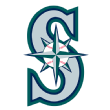
27. Safeco Field, home to Seattle Mariners
Runs: 0.899, HR: 0.937, HR (RHB): 0.894, HR (LHB): 0.981*
Dimensions: 331' (8')-378' (8')-401' (8')-381' (8')-326' (8')
Altitude: 17 feet; Retractable-roof stadium; Grass field
Park factors are for 2013-15 seasons only, under current measurements
Even with the Mariners' fence adjustments following the 2012 season, Safeco remains a pitching-friendly ballpark, and pretty extremely so. This is probably mostly due to the marine layer present on the west coast, especially for venues close to sea level, and it might explain why Safeco's strikeout rate is so high (1.054 factor, seventh-highest). Safeco is the game's worst venue for extra-base hits (0.874), and is only slightly more favorable for home runs (0.937).
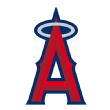
28. Angel Stadium, home to Los Angeles Angels
Runs: 0.879, HR: 0.840, HR (RHB): 0.861, HR (LHB): 0.800
Dimensions: 330' (8')-387' (8')-400' (8')-370' (18')-330' (18')
Altitude: 146 feet; Open-air stadium; Grass field
Angel Stadium was the only ballpark in the past five seasons to have a park factor that ranked among the top-10 most pitching friendly in every category; it was even a top-10 venue for strikeouts (1.036 factor, 10th). It was slightly tougher on left- than right-handed hitters in terms of hits, extra-base hits and home runs as well, perhaps a result of its 18-foot-high fence in right and right-center field.

29. Petco Park, home to San Diego Padres
Runs: 0.864, HR: 0.952, HR (RHB): 0.859, HR (LHB): 1.093*
Dimensions: 336' (8')-390' (8')-396' (8')-391' (8')-322' (8')
Altitude: 15 feet; Open-air stadium; Grass field
Park factors are for 2013-15 seasons only, under current measurements
Once the most pitching-friendly ballpark in baseball, Petco's fence adjustments following the 2012 season helped bring it closer to the pack. That was especially true for left-handed hitters, who scarcely stood a chance in the venue's early days; this is actually now a neutral to slightly hitter-friendly ballpark in terms of home runs, and it's almost league average in terms of hits (0.964 factor) and extra-base hits (0.956). But the main reason that Petco is still regarded an extreme pitchers' park is its strikeout potential; its 1.058 factor is sixth-highest in the game.

30. AT&T Park, home to San Francisco Giants
Runs: 0.820, HR: 0.630, HR (RHB): 0.678, HR (LHB): 0.566
Dimensions: 339' (6')-364' (6')-399' (10.5')-421' (21')-309' (21')
Altitude: 8 feet; Open-air stadium; Grass field
No ballpark in baseball depresses home runs more than AT&T Park, and especially lefty hitters' homers; it's remarkable that Barry Bonds fared as well as he did here. Marlins Park (0.659 home run factor) was the only other venue even close for lefties, and that's before the Marlins moved in their fences this winter. The game's deepest right-center field measurement (421 feet) and 21-feet-high fence in both right-center and right fields are largely responsible, which also explains this park's No. 6 ranking in terms of lefties' extra-base hits (1.072). That forgiving outfield is one of the primary arguments for Jeff Samardzija warranting as much patience as possible from fantasy owners as he attempts a rebound from a miserable 2015.
